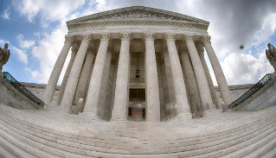About Us
The Court considered a trio of ERISA cases last term that resolved some longstanding questions while raising a host of new ones. In Thole v. USA Bank, N.A., 140 S. Ct. 1615 (2020), the Court held that individuals do not have standing to sue for pension plan mismanagement unless they can show that the mismanagement will imminently affect their own benefits. For participants in defined benefit plans, this decision forbids litigants from pursuing a remedy for breaches unless they threaten the integrity of the entire plan—and even then, the Court suggested, their anticipated loss may need to exceed the amount guaranteed by the Pension Benefit Guaranty Corporation (PBGC) to be actionable. Id. at 1622 & n.2. Thole forecloses many lawsuits but opens up new channels of litigation surrounding whether plaintiffs have adequately shown that a breach threatens a plan’s stability and risks termination; whether a PBGC guaranty defeats standing even in the case where the breach threatens the plan’s integrity; and whether defined contribution plans—i.e., 401(k) and 403(b) plans—should be treated the same way as traditional pension plans, when gains and losses to plan assets may directly affect their benefit amounts, even when the plan itself is not in jeopardy.
On the other hand, Intel Corp. Inv. Policy Comm. v. Sulyma, 140 S. Ct. 768 (2020), opened the door to more claims by holding that to meet the “actual knowledge” requirement that triggers ERISA’s shortened three-year limitations period (as opposed to the usual six-year period), a plaintiff must have become aware of the information. Id. at 776-77. The decision makes clear that a plaintiff does not necessarily have “actual knowledge” of information contained in disclosures that he receives but does not read or cannot recall reading. However, it leaves open crucial questions about when defendants have met their burden to show actual knowledge, what facts the plaintiff must know to have knowledge “of the breach,” and how the decision will affect class actions. Particularly in light of the Department of Labor’s new electronic disclosure rules, which make it easier for plans to disseminate information over email, questions of whether and to what extent plaintiffs have read or understood these disclosures are likely to arise in the near future. See Default Electronic Disclosure by Employee Pension Benefit Plans Under ERISA, 85 Fed. Reg. 31884 (May 27, 2020) (to be codified at 29 C.F.R. pts. 2520, 2560). AARP and AARP Foundation filed amicus briefs supporting plan participants in Thole and Sulyma.


You have the power to change the lives of seniors in poverty
1 in 3 older adults struggle to meet their basic needs. Your gift can help seniors secure good jobs, get the benefits they've earned, and stay connected to their communities.


















